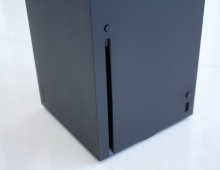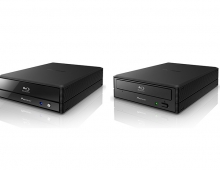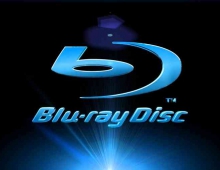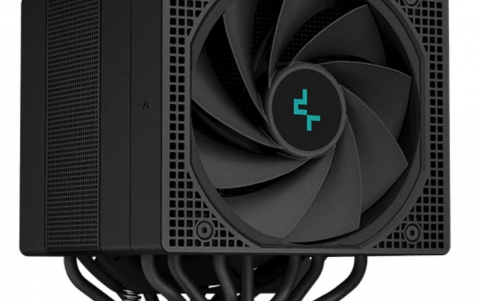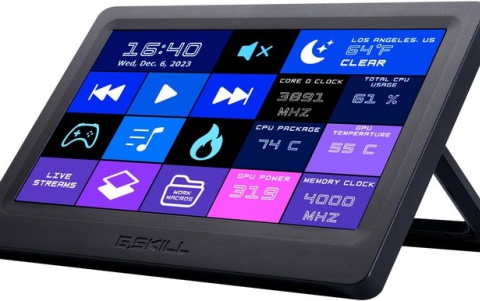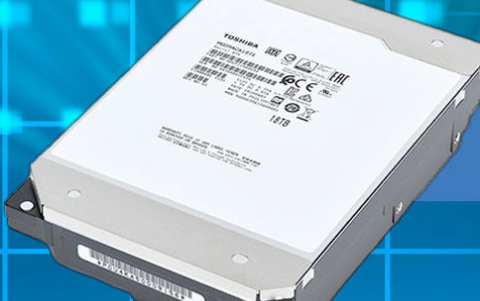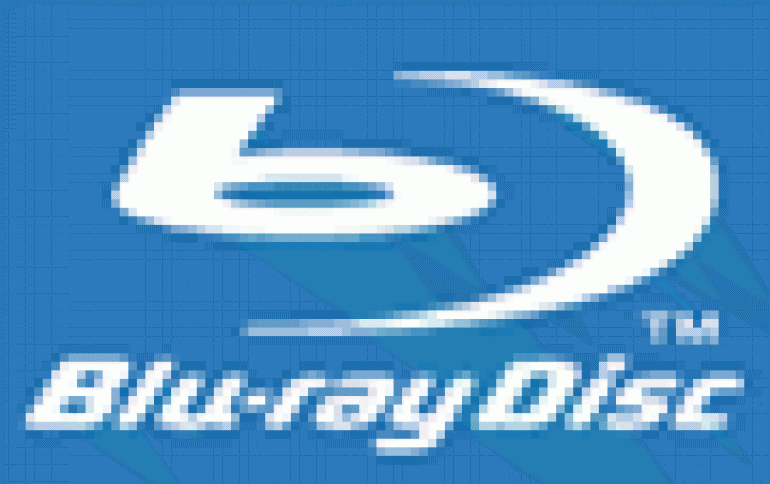
Dual-Format Blue Laser Players Expected Next Year
The first HD players capable of playing both both Blu-ray and HD-DVD disks are expected to appear by the end of 2007, possibly ending the format war in next-generation DVD.
Chip vendors such as NEC, Broadcom and STMicroelectronics are currently developing ICs that allow high-definition optical drives and players to comply with the two competing specifications.
Broadcom's chip could help PC and DVD manufacturers sidestep the choice between two high-definition recording standards with a chip that can decode signals recorded in either format.
The chip company has launched the BCM7411D chip, that supports the H.264 and VC-1 compression standards, both of which are used by Blu-Ray and HD DVD recording technology. It also supports video recorded in the high-definition MPEG-2 format. The company released a reference design with the BCM7411D and a companion chip that gives manufacturers a blueprint to build high-definition DVD players.
The company claims that by providing a single-chip high definition decoder that supports all three compression standards, manufacturers will be able to build media players that support both high definition optical discs as well as existing DVD video titles.
The chip's integrated audio codec supports Dolby Digital (AC-3), Dolby Digital Plus, DTS 5.1, DTS-HD, MLP Lossless, LPCM and MPEG audio formats. The chip also supports Thomson's Film Grain Technology.
For developing Blu-ray and HD DVD media players using the BCM7411D chip, Broadcom also announced the release of the BCM97438 reference platform. The platform includes a reference board featuring the BCM7411D HD A/V decoder chip and the company's BCM7038 dual-channel HD digital video system chip, as well as a software platform that offers OEMs a wide range of integration options.
The dual HD/BD decoder chip has been designed into the first-generation Toshiba HD-DVD player and into Samsung's Blu-ray Disc player.
STMicroelectronics is integrating the latest Blu-ray software changes into its STi7200 chip, originally developed for the set-top market, along with support for the middleware required by HD-DVD and Blu-ray. The chip will be in volume in 2007.
While both Broadcom and ST currently offer only the back-end decoder IC for next-generation DVD players, NEC last month began sampling a front-end processor chip set that can handle read/write operations for both HD-DVD and Blu-ray Disc players.
"It's just a matter of time" before disk drives compatible with both formats hit the market, said Shigeo Niitsu, vice president responsible for system-on chip LSIs for PC peripherals and audio/video digital systems at NEC Electronics. Although no drive vendors have released such combo drives yet, he said, "PC companies like HP are looking for drives that are compatible with both formats. Technically speaking, LSIs for such drives are ready."
According to analyst Doherty, both Samsung Electronics Co. Ltd. and LG Electronics Inc. last year said they would develop and market universal players. LG at that time even said that it would have one available by this autumn. But both companies later retracted their announcements, and Doherty suspects they did so after being pressured by the Blu-ray camp.
As leader of the Blu-ray camp, Sony has bet big on that format. Its Playstation 3, due out this month, will be a Blu-ray system. And on the content side, Sony's Columbia Pictures is releasing titles on Blu-ray. Calling the format debate "emotionally charged," Doherty said he believes the Blu-ray group is urging CE vendors not to develop the universal player, because "it would give HD-DVD added credibility."
For chip manufacturers, meanwhile, making either a front-end or a back-end IC comply with the two competing next-generation DVD formats is no trivial task.
A back-end decoder must be able to handle different operating systems and separate middleware--Java for Blu-ray and Microsoft's HDi for HD. Some HD-DVD players are based on Windows CE, others on Linux. ST's universal player platform, for example, is built on Linux so as to cater to both HD and Blu-ray.
Manufacturers should be able architect a chip with the right partitioning of software and hardware so that there will be a built-in flexibility, since the specifications may change in the near future.
Blu-ray Profile 2, for example, requires the system to connect to the Internet and decode two video streams. The chip decodes the primary stream in high definition and the second either in standard or high def, though dual HD streams may soon be required.
More difficult challenges include cases in which one format supports items that the other doesn't. For example, both formats support the Advanced Access Content System, but Blu-ray requires an additional layer of encryption, known as BD+. An even bigger hurdle is the different programming environments.
Both ST and Broadcom plan to enter the front-end IC business as well, according to a repoprt on EEtimes.com. ST is working with a Japanese chip vendor that supplies ICs for optical drives. Broadcom is considering partnering with another vendor strong in the optical drive market. It's inevitable that a DSP and the analog chips used in the front end will be integrated into the back-end decoder IC.
The optical side looms as a daunting technical issue. Either a dual-format optical pickup unit or two separate optical pickup units would be necessary for any universal player, because each format stores information at a different depth on the disk.
Ricoh, for one, is developing an objective lens that can read and write disks of both formats. NEC's set consists of two LSI chips. The μPD63410 is responsible for data processing tasks such as error correction, while the operation of the second LSI, code-named μPC3360, is to control the read out of the disc data. The LSI set is able to offer a maximum writing speed of 5x for both HD DVD and BD formats (HD DVD-R/RW/RAM and BD-R/RE) and of course, HD DVD and BD-ROM reading. Other features include up to 16x write for DVD±R/±RW/-RAM and 48x for CD-R/CD-ROM. In addition, it is supporting the Advanced Access Content System (AACS) protection technology as well as the CCS (DVD), CPRM and VCPS (DVD recordable).
ST's representatives believe that the cost delta for dual drives will become "very low" in 2007.
Broadcom's chip could help PC and DVD manufacturers sidestep the choice between two high-definition recording standards with a chip that can decode signals recorded in either format.
The chip company has launched the BCM7411D chip, that supports the H.264 and VC-1 compression standards, both of which are used by Blu-Ray and HD DVD recording technology. It also supports video recorded in the high-definition MPEG-2 format. The company released a reference design with the BCM7411D and a companion chip that gives manufacturers a blueprint to build high-definition DVD players.
The company claims that by providing a single-chip high definition decoder that supports all three compression standards, manufacturers will be able to build media players that support both high definition optical discs as well as existing DVD video titles.
The chip's integrated audio codec supports Dolby Digital (AC-3), Dolby Digital Plus, DTS 5.1, DTS-HD, MLP Lossless, LPCM and MPEG audio formats. The chip also supports Thomson's Film Grain Technology.
For developing Blu-ray and HD DVD media players using the BCM7411D chip, Broadcom also announced the release of the BCM97438 reference platform. The platform includes a reference board featuring the BCM7411D HD A/V decoder chip and the company's BCM7038 dual-channel HD digital video system chip, as well as a software platform that offers OEMs a wide range of integration options.
The dual HD/BD decoder chip has been designed into the first-generation Toshiba HD-DVD player and into Samsung's Blu-ray Disc player.
STMicroelectronics is integrating the latest Blu-ray software changes into its STi7200 chip, originally developed for the set-top market, along with support for the middleware required by HD-DVD and Blu-ray. The chip will be in volume in 2007.
While both Broadcom and ST currently offer only the back-end decoder IC for next-generation DVD players, NEC last month began sampling a front-end processor chip set that can handle read/write operations for both HD-DVD and Blu-ray Disc players.
"It's just a matter of time" before disk drives compatible with both formats hit the market, said Shigeo Niitsu, vice president responsible for system-on chip LSIs for PC peripherals and audio/video digital systems at NEC Electronics. Although no drive vendors have released such combo drives yet, he said, "PC companies like HP are looking for drives that are compatible with both formats. Technically speaking, LSIs for such drives are ready."
According to analyst Doherty, both Samsung Electronics Co. Ltd. and LG Electronics Inc. last year said they would develop and market universal players. LG at that time even said that it would have one available by this autumn. But both companies later retracted their announcements, and Doherty suspects they did so after being pressured by the Blu-ray camp.
As leader of the Blu-ray camp, Sony has bet big on that format. Its Playstation 3, due out this month, will be a Blu-ray system. And on the content side, Sony's Columbia Pictures is releasing titles on Blu-ray. Calling the format debate "emotionally charged," Doherty said he believes the Blu-ray group is urging CE vendors not to develop the universal player, because "it would give HD-DVD added credibility."
For chip manufacturers, meanwhile, making either a front-end or a back-end IC comply with the two competing next-generation DVD formats is no trivial task.
A back-end decoder must be able to handle different operating systems and separate middleware--Java for Blu-ray and Microsoft's HDi for HD. Some HD-DVD players are based on Windows CE, others on Linux. ST's universal player platform, for example, is built on Linux so as to cater to both HD and Blu-ray.
Manufacturers should be able architect a chip with the right partitioning of software and hardware so that there will be a built-in flexibility, since the specifications may change in the near future.
Blu-ray Profile 2, for example, requires the system to connect to the Internet and decode two video streams. The chip decodes the primary stream in high definition and the second either in standard or high def, though dual HD streams may soon be required.
More difficult challenges include cases in which one format supports items that the other doesn't. For example, both formats support the Advanced Access Content System, but Blu-ray requires an additional layer of encryption, known as BD+. An even bigger hurdle is the different programming environments.
Both ST and Broadcom plan to enter the front-end IC business as well, according to a repoprt on EEtimes.com. ST is working with a Japanese chip vendor that supplies ICs for optical drives. Broadcom is considering partnering with another vendor strong in the optical drive market. It's inevitable that a DSP and the analog chips used in the front end will be integrated into the back-end decoder IC.
The optical side looms as a daunting technical issue. Either a dual-format optical pickup unit or two separate optical pickup units would be necessary for any universal player, because each format stores information at a different depth on the disk.
Ricoh, for one, is developing an objective lens that can read and write disks of both formats. NEC's set consists of two LSI chips. The μPD63410 is responsible for data processing tasks such as error correction, while the operation of the second LSI, code-named μPC3360, is to control the read out of the disc data. The LSI set is able to offer a maximum writing speed of 5x for both HD DVD and BD formats (HD DVD-R/RW/RAM and BD-R/RE) and of course, HD DVD and BD-ROM reading. Other features include up to 16x write for DVD±R/±RW/-RAM and 48x for CD-R/CD-ROM. In addition, it is supporting the Advanced Access Content System (AACS) protection technology as well as the CCS (DVD), CPRM and VCPS (DVD recordable).
ST's representatives believe that the cost delta for dual drives will become "very low" in 2007.




